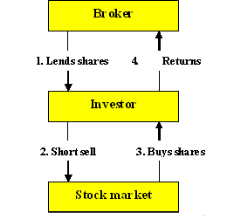Above the market refers to a strategy used in stock trading in which the investor makes trades only when the price of a security reaches a point somewhere higher than its current level. Both buy and sell orders may be made in this way. The three most common types of above the market orders are a buy stop order, a buy stop-limit order, and a sell limit order. Traders who use this strategy on buy orders are betting on the momentum of the price jump to continue to spur the price upward.
There are many strategies used to play the stock market, but most are variations of the buy-low, sell-high strategy that most investors quote as a motto. Except when it is used to sell stock, trading above the market flies in the face of this motto, as an investor who uses it to buy stock will be buying high. Investors using this strategy attempt to find a level where they can trust that the upward movement is a trend rather than a fluke.
One type of above the market order is a buy stop order. In this type of stock trade, an investor instructs his broker not to buy a stock until it reaches a certain price above where it currently stands. For example, if a stock is trading at $50 US Dollars (USD) per share, the investor may place a buy stop order at $60 USD per share. If the price reaches that level, then the investor makes the purchase. Should the stock fail to reach that level, then the investor does nothing.
A buy stop-limit order is an above the market order often used in conjunction with this. At times, an investor may want to ride the momentum of a stock only so far, fearing that at some point the stock may level out and cause the price to fall. Using the example above, the investor may put the buy order at $60 USD per share but put a limit at $65 USD per share. That means that the buy order will be in effect at $60 USD per share but will be canceled once the price reaches $65 USD per share.
The sell limit above the market order falls in line with the typical stock strategy that holds that investors should sell stocks at a high price. A limit order means that the order is not executed until a certain level is reached, which differs from a market order, which is executed immediately. An investor holding shares of a stock at $25 USD per share may put a sell limit order on the stock once it reaches $35 USD per share. At the point when the stock reaches that price, the investor will sell the shares.

